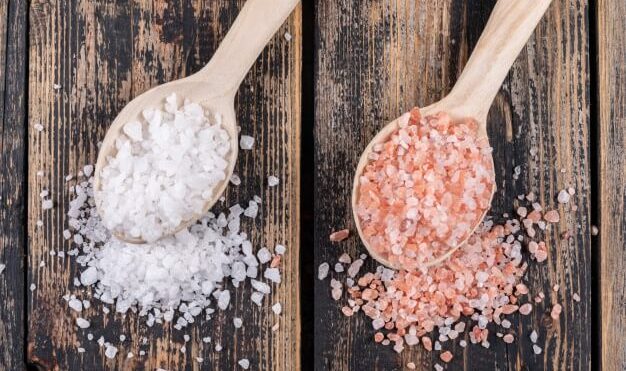When comparing pink salt and white salt (typically refined table salt), both have similarities, but there are also differences in their composition and how they are processed. Here’s a breakdown of the key factors:

- Mineral Content:
Pink Salt: Often referred to as Himalayan pink salt, it is considered less processed and retains more minerals like potassium, magnesium, and calcium, which are typically removed in white salt during refining. However, these minerals are present in very small amounts, so their impact on overall health is minimal.
White Salt: Refined table salt is stripped of most of its natural minerals, leaving primarily sodium chloride. Some table salt may have added iodine, which is important for thyroid function.
- Sodium Levels:
Both pink and white salts are high in sodium, which, in excessive amounts, can contribute to high blood pressure and other health issues. The sodium content in both salts is very similar, so in terms of sodium intake, they don’t differ significantly.
- Processing:
Pink Salt: Is often harvested from ancient sea salt deposits and undergoes minimal processing. As a result, it can retain its natural color and trace minerals.
White Salt: Undergoes extensive refining to remove impurities and minerals, and it may contain anti-caking agents to prevent clumping.
- Taste:
Pink Salt: Has a slightly more complex flavor due to its mineral content, with some people claiming it tastes more “robust.”
White Salt: Tends to have a cleaner, sharper taste due to the higher concentration of sodium chloride.
Which Is Healthier?
While pink salt contains some additional minerals, the quantities are so small that it has little to no health advantage over white salt. The key to a healthy diet is to limit overall salt intake, regardless of whether it’s pink or white. In moderation, both salts can be part of a balanced diet, but neither is significantly “healthier” than the other. The primary concern should be reducing sodium consumption overall, rather than focusing on the type of salt.